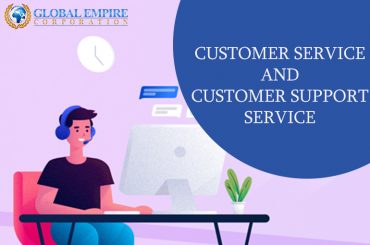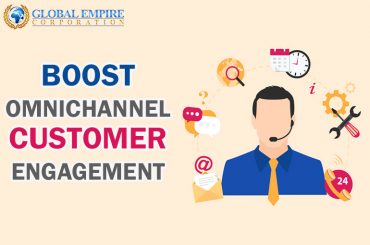Outbound sales are the procedure through which sales representatives contact prospects and make sales presentations. While cold calling is a classic example, outbound sales teams also employ email and other forms of contact in the current day. The distinguishing characteristic is that salespeople contact leads—leads do not come to you.
Unless your outbound sales force has access to the appropriate tools, they are impotent. Nearly 85% of top sales executives feel that tools are critical to sales success. The other element that often takes a back seat is training. While training is important, if it is a one-time event, the teachings are brief. Within 90 days, 84 percent of original instruction is gone.
How Do Outbound Sales Work?
In a word, a successful outbound strategy is a contingent upon developing the appropriate Ideal Customer Profile (ICP) for your organization, implementing the proper playbook, and implementing an effective metric for assessing performance or success.
Outbound sales services will involve specialists who encounter severe obstacles from the start. Their primary function is to initiate contact and establish connections with strangers. The issue is that individuals are innately suspicious of unsolicited calls, emails, and direct messages. They despise disruptions, particularly when they are urged to purchase something they are unfamiliar with.
It needs a) skill, b) a deft plan, c) a repeatable process, and d) the greatest tools to overcome these early-game obstacles. A successful outbound sales operation involves a highly experienced and motivated sales staff and a data-driven innovation and technology stack that streamlines the sales process.
Which are the Most-Preferred Outbound sales techniques
Cold call
One of the most common methods is cold calling when it comes to reaching out to potential customers and starting the sales cycle. During this conversation, an SDR attempts to persuade the prospect to choose their solution. The SDR is unfamiliar with the possibility, but they do know something about the issue they are trying to solve.
This approach is best suited for B2C sales when the ticket value is low and short sales cycle. But it is very effective in B2B sales as well.
Cold email
SDRs use cold email strategies, sending emails to potentially offer a solution. Cold emailing is one of the most effective tactics since it converts at least 50% of qualified leads. It’s comparable to cold calling, except that the targeted prospects are considerably more sorted, and the SDRs spend considerable time researching them.
SDRs do extensive research on prospects’ personal information and current behaviors to personalize cold emails. Email personalization may increase your return on investment by 59 percent. Additionally, prospect analysis aids the sales staff in properly qualifying hot leads and eliminating poor leads. Cold emailing is appropriate for B2B sales because the average transaction value is bigger, and the sales cycle is lengthier.
Social selling
Social selling is the practice of reaching out to prospects through different social media platforms (e.g., LinkedIn, Angel. co). The SDRs constantly seek new leads through social media platforms and initiate pitches for their product/service. Additionally, they cultivate them to close the transaction.
Social selling may be advantageous for both business-to-business and business-to-consumer sales. In business-to-consumer sales, most contact occurs through social networks and is quickly moved to phone calls or email. In B2B sales, communication begins with social media and progresses through emails. Eighty-four percent of B2B executives rely on social media to inform their purchasing choices.
Also Read: How Does The Costing Work When Outsourcing Lead Generation
What are the Benefits of Implementing Outbound Sales?
Builds Predictable Revenue
Outbound sales enable you to build your company via a systematic procedure – it does not rely on luck. Once you’ve established a well-oiled machine, all you must do is increase the number of prospects included in your outreach initiatives. You’ll generate a consistent quantity of quality leads.
This way, you maintain total control over your company – you are only restricted by the number of individuals you contact and have a consistent structure for consistently generating leads.
Takes Lesser Time to Generate Leads
SEO, content marketing, and other strategies might take months to see returns. If you’re looking for a fast start, try your hand at outbound sales. A well-executed outbound sales strategy may help you start bringing in money right away. Now is the perfect time to start looking for new prospects for converting leads to sales that build trust and eventually close more agreements.
Helps you Dominate your Niche
In contrast to other channels, where you have no say over the leads that come in, outbound sales enable you to choose your consumers. By exerting total control over the opportunities you pursue, you may cultivate a highly targeted client base. This enables you to focus your product/service on this specific group of clients and nail your niche.
Allows you to go After Large Accounts
Active outbound sales enable you to climb upmarket, pursue large clients, and sell to business customers. Most big businesses need external sales and may include several stakeholders. Outbound sales are an excellent method for this. Outbound sales are often a necessary route for businesses going upscale from one category to the next.
Can be Largely Automated
One significant advantage of outbound sales is that they may be automated to a large extent.
Numerous technologies are available to automate every phase of outbound sales today — finding leads, confirming their contact information, delivering cold emails, following up with prospects, and measuring KPIs.
Depending on your budget and desired degree of automation and volume, you may build up a stack that allows your sales agents to concentrate only on interested leads.
Conclusion
Outbound sales strategies are an excellent strategy for your organization to create leads. Consider employing them if you have the time and money but avoid feeling compelled to do so since they may be more costly than standard lead-generating tactics.
The phone, on the other hand, is not wholly antiquated. Voicemail technology is developing, allowing you to leave better messages more rapidly by using a partly pre-recorded message and inserting something personalized. Therefore, although inbound sales continue to grow in popularity, don’t abandon your established and effective outbound strategy. The reality is that they are both critical components of your overall sales approach.
Also Read:Why Sales Play A Major Role In Driving Organizational Growth?





